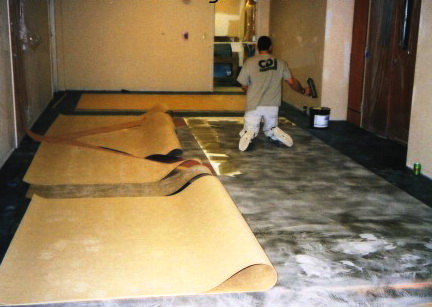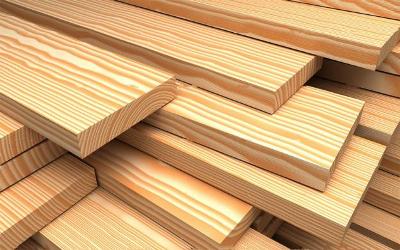How to make linoleum flooring with your own hands: a comparison of adhesive and adhesiveless methods
“Flaxseed oil” - this is how the word “linoleum” is familiar to everyone. Despite the fact that we are accustomed to consider this material synthetic, the first linoleum was made from a mixture of linseed oil, chalk, resin and wood flour. As early as the middle of the 19th century, all this was applied to jute fabric and received a practical and beautiful floor covering. Over time, the production technology of this material has improved. In the 20th century, linseed oil was replaced by polyvinyl chloride, which made the coating cheaper, but much less environmentally friendly. Fortunately, in recent years, the production of natural coatings is gaining momentum again. Whatever you prefer - practicality and cheapness or environmental friendliness - linoleum flooring will not be a problem for you. However, before proceeding with the installation, it is important to choose the right material. Well, then we will already figure out how to make linoleum flooring with your own hands, what features these works have and much more.
Which one to take - commercial or regular?
Linoleum differs not only in the type of raw materials, but also in purpose. There is a household and commercial linoleum. The first, as the name implies, is intended for apartments and private houses, and the second for offices, shops and industrial premises.
Household linoleum is of several types:
- Thin - This is a material without a base, up to 1.5 mm thick. Its main advantage is cheapness. The operational qualities of such a material leave much to be desired. First, thin linoleum requires an ideal base. Otherwise, it will break very quickly. Secondly, its service life is less than 5 years.
- Foam based - such material is less demanding on the base. Due to its sufficiently large thickness and soft base, it is able to “smooth out” small irregularities in the floor. When producing linoleum flooring on a wooden floor, you can do without preliminary grinding, it is enough to trace that nails do not stick out of it. The service life of this material is about 10 years.
- On a felt basis - such linoleum is only monophonic. The basis for it is natural or artificial felt, which provides excellent thermal insulation and eliminates small irregularities in the floor.
Commercial linoleum not only thicker than household, but also much stronger. As a rule, it is covered with a transparent polyurethane film, which provides excellent protection against abrasion. This material is applicable in everyday life - commercial linoleum flooring is justified in the kitchen or hall, where it is customary to walk in street shoes. The only drawback of this material is the high price.
Important! Going to the store, it is important to correctly calculate the required amount of material. To do this, measure the width and length of the room in several places, take into account all the niches and bay windows, as well as the width of the skirting boards.
Ways of flooring, nuances and tricks of work
If you have already purchased the material and decided to lay it yourself, do not rush to roll up your sleeves. On the day of purchase you do not have to work. The fact is that the material must be allowed to "rest" for at least a day. To do this, just spread it around the room and leave it.
Important! Linoleum needs to be transported only rolled up. It cannot be folded - in this case, creases will remain on the material, which cannot be eliminated.
While linoleum is "resting" there is time to think about how to lay it - on glue or freely. The latter method is suitable only for small rooms and only if you put one sheet of material. In large rooms and rooms where the floor is experiencing increased stress, linoleum is recommended to be glued. A thin material with a smooth base is glued using latex-based mastic. If the base is fleecy, PVA or Bustilat M glue is best. Linoleum based on felt cannot be glued.
The technology of linoleum flooring is quite simple. First of all, you need to properly cut it. This should be done with a sharp knife, moving along the wall. In this case, it is necessary to leave a gap between the wall and linoleum - about 10 mm (for the adhesive laying method).
Glueless method
When using this method of laying, the process, not having time to start, is already nearing completion. When the edges are trimmed, it remains only to roll the material with a heavy roller, removing air bubbles, and squeeze it with skirting boards.
Glue method
In this way, linoleum flooring on plywood, concrete or any other base is made as follows:
- We draw an imaginary longitudinal line through the center of the room and carefully bend one half of the material. This must be done so as not to shift the entire sheet;
- Using a spatula with teeth, we apply glue to the base;
- We return linoleum into place and roll it with a heavy roller;
- Bend the other edge until we see the glue;
- We apply glue to the floor in the same way, bend linoleum and roll it with a roller.
Important! Flooring of homogeneous linoleum should be made only on special glue for PVC coatings.
Sealing joints between sheets
In large rooms where you have to lay several sheets of material, it is necessary to carefully seal the joints between them. At home, it is most convenient to use "cold welding":
- Glue a strip of masking tape on the joint between the sheets;
- With a clerical knife we cut it along the seam;
- We squeeze glue from the tube into the crack between the sheets and leave for half an hour;
- Remove the masking tape and you're done.
This is how it is all done:






10 comments